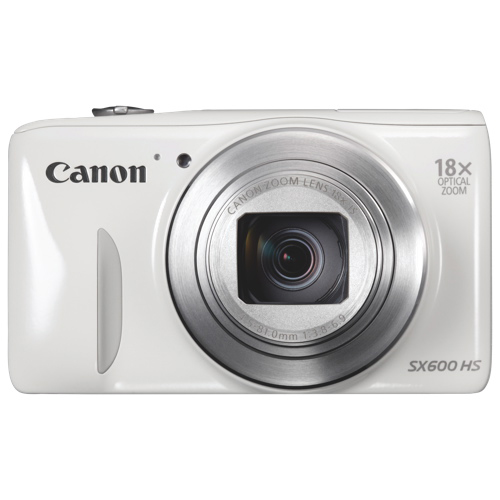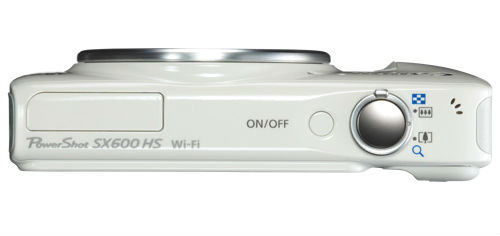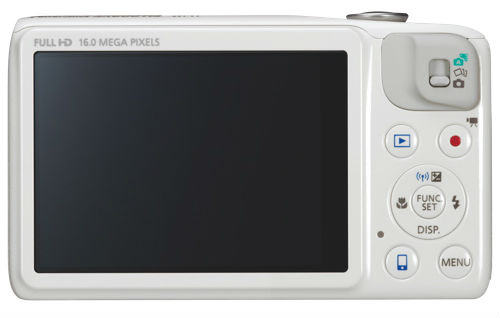 The Canon SX600 is a 16 mega pixel point-and-shoot, with a 18x optical zoom. It’s a small and lightweight camera, which makes that big optical zoom all the more impressive. I had a lot of fun testing this camera, particularly when we went out to a trendy Vancouver eatery one night, because I was able to take some candids and some detail shots that I wouldn’t have been able to get without breaking out my 5D and my very conspicuous 70-200mm lens!
The Canon SX600 is a 16 mega pixel point-and-shoot, with a 18x optical zoom. It’s a small and lightweight camera, which makes that big optical zoom all the more impressive. I had a lot of fun testing this camera, particularly when we went out to a trendy Vancouver eatery one night, because I was able to take some candids and some detail shots that I wouldn’t have been able to get without breaking out my 5D and my very conspicuous 70-200mm lens!
The 18x optical zoom is the equivalent of 25-450mm in DSLR terms. The aperture ranges from f/3.8 at the widest focal length to f/6.9 at the narrowest (i.e. fully zoomed). The focus distance in macro mode is a mere 5cm, which is really impressive, and way lower than what you’ll get with most cameras. The only thing you have to watch out for when you’re that close is that the camera might actually cast a shadow on whatever you’re photographing.
The fastest shutter speed is 1/2000 sec, which is pretty slow in general terms. There’s a night photography mode which allows you to specify a exposure time of up to 15 seconds.
Unfortunately you don’t get a optical viewfinder, which is as expected for a modern point-and-shoot. You do get a very nice 3-inch LCD screen however, with about 461,000 pixels.
One thing that really surprised me is that you only get a very minimal set of instructions with the SX600. You have to go the the Canon website to get the full manual with all the info necessary to use the camera to the fullest. If you’re planning to shoot in Program mode you will definitely have to consult the manual, as the controls available aren’t particularly intuitive.
Another little quirk that threw me off a bit was that you get a different set of options when you press the Menu button while the camera is in shooting mode than you do when the camera is in playback mode. I think the reason this caught me out is that the options available when you press the Menu button on one of Canon’s DSLR offerings are always the same.
 In terms of ergonomics and button layout, things are pretty straightforward. There’s not too many buttons to worry about which is nice. On the top you get the on/off button and the shutter release button. The zoom control encircles the shutter release button, and is actually a bit small and fiddly – not the best I’ve come across by a long way. That said, it does make for a really simple layout.
In terms of ergonomics and button layout, things are pretty straightforward. There’s not too many buttons to worry about which is nice. On the top you get the on/off button and the shutter release button. The zoom control encircles the shutter release button, and is actually a bit small and fiddly – not the best I’ve come across by a long way. That said, it does make for a really simple layout.
On the back of the camera you’ve got a little multi-select button which allows you to choose between regular shooting mode, Hybrid Auto, and Creative Shot. Hybrid Auto is an interesting feature whereby the camera shoots not only the still image that you’ve composed, but also a four second video clip to go with it. The drawback is that it takes a while to process as the video is being written to the card, during which time the camera is basically frozen. I was using an old card though, so you might see better performance with an up-to-date card with a good write speed.
Creative Shot takes your single image and processes it in 5 different ways. You do get to keep your original unprocessed shot too. The creative options are also available to choose as a standalone shooting mode too, but in this case you just get a single image with the effect applied.
 Among the other shooting modes available, you have something called ‘Smart Shutter’. You have three options in here; ‘Smile Detection’, ‘Wink Self-Timer’, and ‘Face Self-Timer’. Smile Detection takes a photo when your subject smiles (perfect for photographing kids), although I found it worked pretty well as Goofy Face Detection too! Wink Self-Timer is something totally unique that I’ve never seen before. You just wink at the camera and it starts a countdown before shooting! It didn’t work flawlessly for me however, and I had to make some really over-the-top theatrical winks. Face Self-Timer starts a countdown as soon as a new face enters the scene, so you can set up a group shot and when you join the group the timer will start. In each of these modes you can choose to shoot between 1 and 10 photos at a time.
Among the other shooting modes available, you have something called ‘Smart Shutter’. You have three options in here; ‘Smile Detection’, ‘Wink Self-Timer’, and ‘Face Self-Timer’. Smile Detection takes a photo when your subject smiles (perfect for photographing kids), although I found it worked pretty well as Goofy Face Detection too! Wink Self-Timer is something totally unique that I’ve never seen before. You just wink at the camera and it starts a countdown before shooting! It didn’t work flawlessly for me however, and I had to make some really over-the-top theatrical winks. Face Self-Timer starts a countdown as soon as a new face enters the scene, so you can set up a group shot and when you join the group the timer will start. In each of these modes you can choose to shoot between 1 and 10 photos at a time.
I’m always interested to see how much fine control an experienced photographed can get from a point-and-shoot. In the case of the SX600, when you’re in Program mode there are a few things you can do to tweak the camera’s performance. You can’t change the aperture or the shutter speed (although you can shoot long exposures, as I mentioned earlier). You do get exposure compensation though, where you can push the exposure up or down by as much as two stops. You get a live preview on the LCD screen too, which is handy. You can also change the white balance, in case you want to make your images look really warm for example. You can manually choose the ISO setting to, anywhere from 100 to 3200. You can also lock your exposure and your focus, which can be really handy. You can change your focus mode and your metering mode too. All things considered, that’s a pretty decent amount of control that you can take.

I’m a fan of cameras that allow you to do some editing right there on the camera, like applying different filters and doing black and white conversions. The SX600 has a few options in this regard; you can crop your image, increase or decrease the contrast, and also apply some color filters. And with that big 3 inch LCD screen, you get a great preview of your final image.
The PowerShot SX600 is a fine little camera, capable of producing really good images, and with the ability to do so over a surprising range of distances. Whether you want to photograph details, landscapes or long range candids, this is a really handy camera to have in your pocket.



